issue contents
March 2007 issue

Cover illustration: Plasmodium vivax phosphatidylethanolamine-binding protein [Arakaki et al. (2007), Acta Cryst. F63, 178-182].
protein structure communications
A crystal structure of ligand-free human glutamate carboxypeptidase II refined to 1.65 Å resolution is reported. The structure provides insight into the active-site of the enzyme in its unliganded state.
PDB reference: human glutamate carboxypeptidase II, 2oot, r2ootsf
Open  access
access
 access
accessA single-point mutant (T109S) of E. coli dihydroorotase initially crystallizes so that the two monomers of the dimer are related by a crystallographic twofold axis. In the presence of substrate, conversion to the previously observed asymmetric dimer with substrate bound in one subunit and product in the other is observed.
PDB reference: dihydroorotase, 2e25, r2e25sf
Open  access
access
 access
accessThe crystal structure of the sweet protein MNEI at 1.15 Å resolution reveals networks of alternate conformations and stably bound negative ions.
PDB reference: monellin, 2o9u, r2o9usf
Open  access
access
 access
accessThe structure of 5-formyltetrahydrofolate cyclo-ligase from B. anthracis determined by X-ray crystallography at a resolution of 1.6 Å is described.
PDB reference: 5-formyltetrahydrofolate cyclo-ligase, 2jcb, r2jcbsf
structural genomics communications
The crystal structure of the hypothetical protein TTHA0281 from T. thermophilus HB8 has been determined at 1.9 Å resolution. The TTHA0281 protein forms a homotetramer in which each monomer adopts an α-β-β-β-α fold.
PDB reference: TTHA0281, 2dsy, r2dsysf
The crystal structure of a phosphatidylethanolamine-binding protein from P. vivax, a homolog of Raf-kinase inhibitor protein (RKIP), has been solved to a resolution of 1.3 Å. The inferred interaction surface near the anion-binding site is found to include a distinctive left-handed α-helix.
PDB reference: phosphatidylethanolamine-binding protein, 2gzq, r2gzqsf
crystallization communications
Initiation factor 1 from M. tuberculosis was cloned, expressed, purified and crystallized. A complete data set has been collected to 1.47 Å resolution.
A family I.3 lipase from Pseudomonas sp. MIS38 was secreted from Escherichia coli cells to the external medium, purified and crystallized and preliminary crystallographic studies were performed.
The complex of the non-ATPase subunit Nas6 with the C-terminal domain of the ATPase subunit Rpt3 of the 26S proteasome from S. cerevisiae was co-expressed in E. coli and purified to homogeneity. The crystals obtained from the protein complex diffracted to a resolution of 2.2 Å.
Kokobera virus is a mosquito-borne flavivirus belonging, like West Nile virus, to the Japanese encephalitis virus serocomplex. Crystals of the Kokobera virus helicase domain were obtained by the hanging-drop vapour-diffusion method and exhibit a diffraction limit of 2.3 Å.
A complex of E. coli flagellar and chemotaxis-specific sigma factor σ28 bound to the σ28-binding region of its antisigma factor FlgM was crystallized. Diffraction data were collected to a resolution of 2.7 Å.
Aminopeptidase 1, a cargo protein in the cytosol-to-vacuole targeting (Cvt) pathway, was expressed, purified and crystallized in two crystal forms.
IREM-1 (immune receptor expressed on myeloid cells 1) is an inhibitory receptor of the immunoglobulin superfamily involved in the functional regulation of myeloid cells. It contains an extracellular region comprising one IgV-like domain. The extracellular IgV-like domain, believed to be involved in target-cell recognition, has been expressed in E. coli, folded in vitro and crystallized.
It is demonstrated that anomalous diffraction based on the signal from a cobalt ion measured on a conventional monochromatic X-ray source can be used to determine the structure of a protein with a novel fold (M. lini avirulence protein AvrL567-A). The approach could be applicable to many metal-binding proteins, particularly when synchrotron radiation is not readily available.
PDB reference: AvrL567-A, 2opc, r2opcsf
Crystals of aliphatic amidase (acylamide amidohydrolase; EC 3.5.1.4) from P. aeruginosa were obtained in space group P6322 and diffracted to 1.25 Å resolution.
The complex formed by a Fab antibody fragment and the indotricarbocyanine dye tetrasulfocyanine (TSC) has been crystallized in three different crystal forms. For two of these, data sets were collected, molecular-replacement solutions were identified and refinement has been started.
The N- and C-terminal fragments of alanyl-tRNA synthetase from the archaeon A. fulgidus have been crystallized.
The PIDD DD–RAIDD DD complex has been crystallized. The crystals are hexagonal and belong to space group P65, with unit-cell parameters a = b = 138.4, c = 207.6 Å. The crystals were obtained at room temperature; a native crystal diffracted to 3.2 Å resolution and a Hg-derivatized crystal to 4.0 Å resolution.
Open  access
access
 access
accessA novel regulator of antibiotic production in S. coelicolor, AbsC, has been crystallized in space group P212121. X-ray data to 2.25 Å resolution were collected on station PX 14.1 at Daresbury.
Open  access
access
 access
accessMonoclinic crystals of NovP, an O-methyltransferase from S. spheroides, were obtained and native X-ray data to 1.4 Å resolution were recorded.
A GTP-binding protein from the hyperthermophilic archaeon Sulfolobus solfataricus has been crystallized. Combined with biochemical analyses, it is expected that the structure of this protein will give insight in the function of a relatively unknown subfamily of the GTPase superfamily.
Two trypsins from the gastric fluid of the marine crab C. pagurus were purified and crystallized and X-ray data were collected to 0.97 and 3.2 Å resolution.
Enoyl-ACP reductase III (FabL) from B. subtilis has been overexpressed, purified and crystallized. The crystal belongs to space group P622, with unit-cell parameters a = b = 139.56, c = 62.75 Å, α = β = 90, γ = 120°, and data were collected to 2.5 Å resolution using synchrotron radiation.
Open  access
access
 access
access1,3-Propanediol dehydrogenase from K. pneumoniae has been overexpressed in E. coli, purified and crystallized. Diffraction data have been collected to 2.7 Å resolution.
addenda and errata
Free 



 journal menu
journal menu















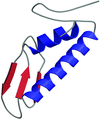
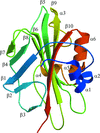











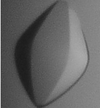


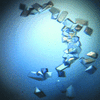



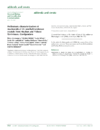
![[publBio]](/logos/publbio.gif)






